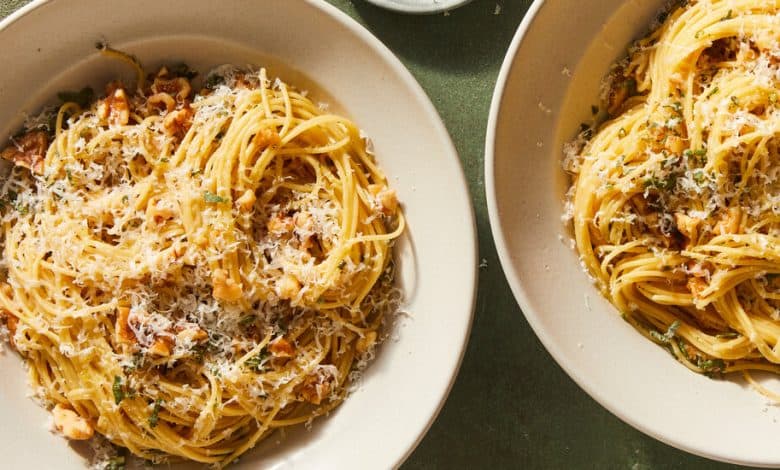Pasta Nada: The Culinary Art of Making Something From Nothing

In John Guare’s play “Six Degrees of Separation,” there’s a scene in which a father asks a second-grade teacher, at parents’ night, why the art her students make is so especially brilliant. “Look at the first grade,” he says to her.
I think of this scene — the father is played by Donald Sutherland in Fred Schepisi’s film version — every time I make the sort of pasta dish that’s known in our house as pasta nada. The key to a true pasta nada is deep restraint. The Zen-secret is knowing when to stop.
Pasta nada is better known to the world as pantry pasta. These are the pasta dishes you make, vastly better and less expensive than ordering out, from ingredients that are already in your kitchen.
There are dozens of books, thousands of articles and many industrious websites devoted to the making of pantry pastas. The more the merrier; I like nearly all of them. But once I heard the phrase pasta nada for the first time three decades ago — from my father-in-law, the chef Bruce LeFavour, and his wife, the photographer Faith Echtermeyer, who used it to describe their own last-minute pasta dishes — I’ve never called it anything else.
Names matter. Would you rather eat calf’s thymus, or sweetbreads? Would “The Joy of Sex” be a cultural touchstone if it had been issued under its original title, “Alex Comfort’s Gourmet Guide to Lovemaking”? A good name is the difference, as Mark Twain put it in a slightly different context, between the lightning bug and the lightning.
The word nada, from the Spanish and classical Latin, means “nothing.” It’s a word that implies renunciation, and it has a much better ring, in this context, than bupkis. If you don’t count olive oil (we don’t), the best pasta nadas employ two ingredients: Parmesan and fresh herbs. Olive oil, Parmesan and herbs are pasta’s rhythm section, and on their own they make sublime pasta nada.
Recipe: Sage and Walnut Pasta Nada
